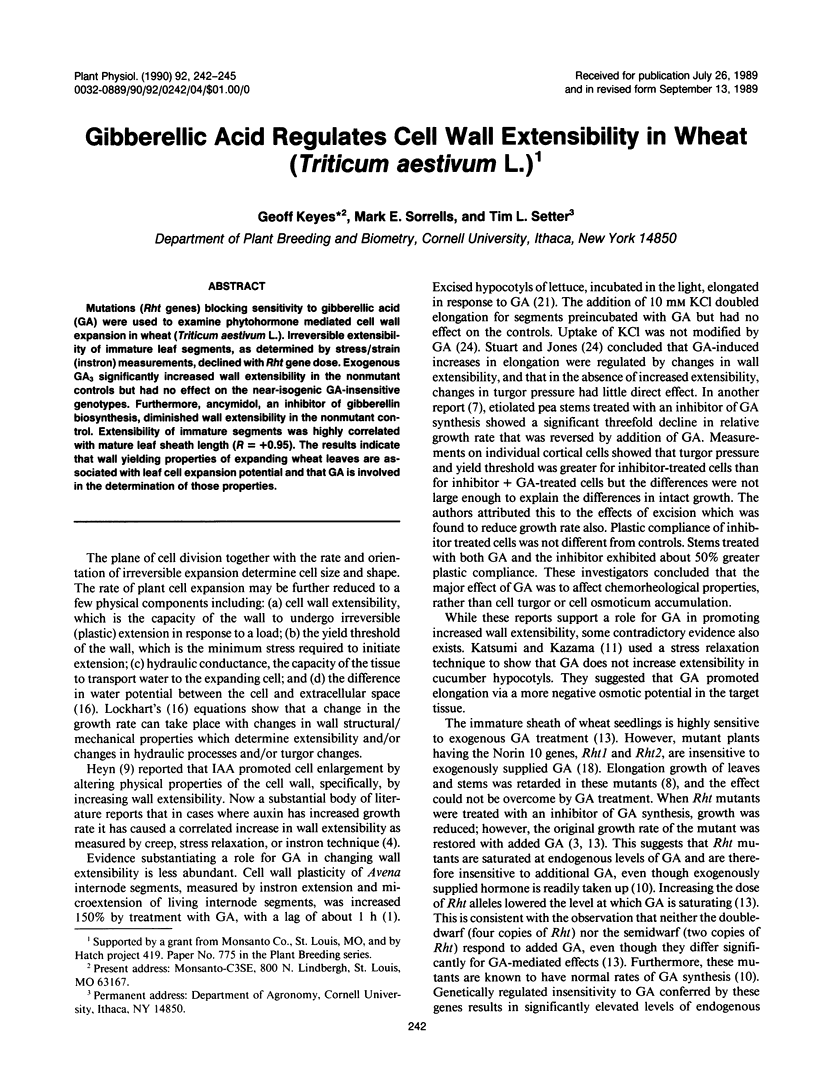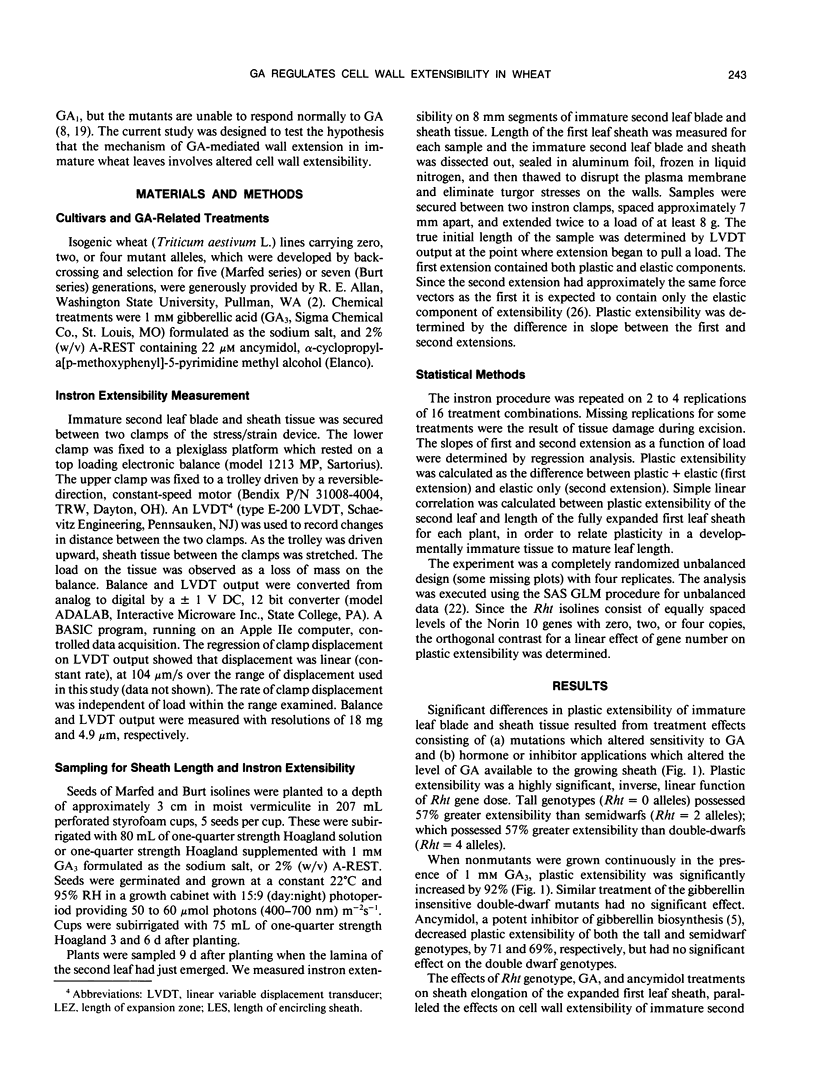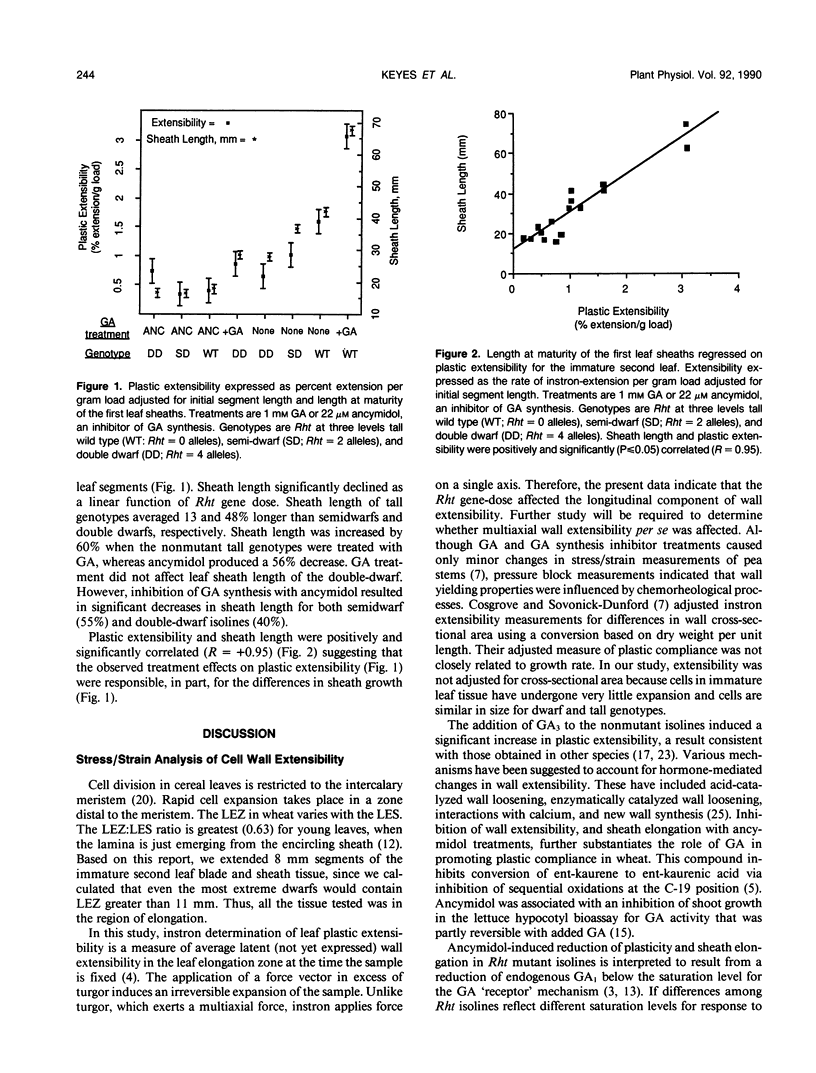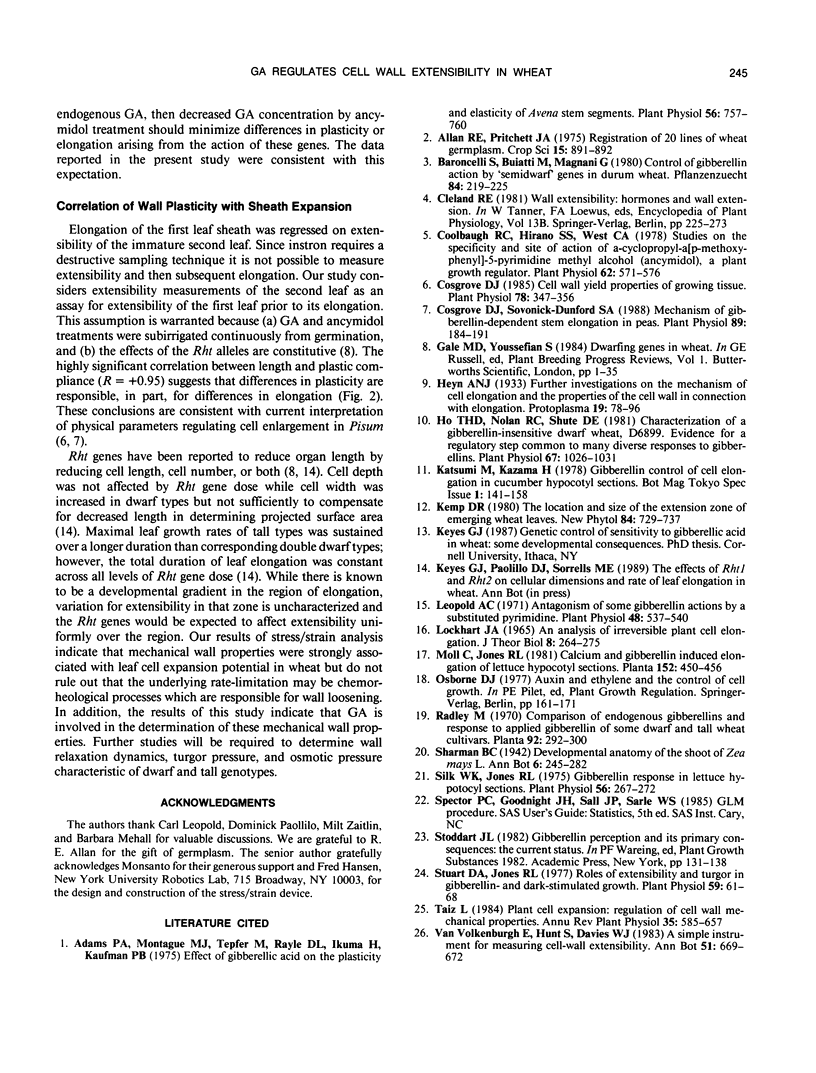Abstract
Mutations (Rht genes) blocking sensitivity to gibberellic acid (GA) were used to examine phytohormone mediated cell wall expansion in wheat (Triticum aestivum L.). Irreversible extensibility of immature leaf segments, as determined by stress/strain (instron) measurements, declined with Rht gene dose. Exogenous GA3 significantly increased wall extensibility in the nonmutant controls but had no effect on the near-isogenic GA-insensitive genotypes. Furthermore, ancymidol, an inhibitor of gibberellin biosynthesis, diminished wall extensibility in the nonmutant control. Extensibility of immature segments was highly correlated with mature leaf sheath length (R = +0.95). The results indicate that wall yielding properties of expanding wheat leaves are associated with leaf cell expansion potential and that GA is involved in the determination of those properties.
Full text
PDF



Selected References
These references are in PubMed. This may not be the complete list of references from this article.
- Adams P. A., Montague M. J., Tepfer M., Rayle D. L., Ikuma H., Kaufman P. B. Effect of gibberellic Acid on the plasticity and elasticity of Avena stem segments. Plant Physiol. 1975 Dec;56(6):757–760. doi: 10.1104/pp.56.6.757. [DOI] [PMC free article] [PubMed] [Google Scholar]
- Coolbaugh R. C., Hirano S. S., West C. A. Studies on the Specificity and Site of Action of alpha-Cyclopropyl-alpha-[p-methoxyphenyl]-5-pyrimidine Methyl Alcohol (Ancymidol), a Plant Growth Regulator. Plant Physiol. 1978 Oct;62(4):571–576. doi: 10.1104/pp.62.4.571. [DOI] [PMC free article] [PubMed] [Google Scholar]
- Cosgrove D. J. Cell wall yield properties of growing tissue : evaluation by in vivo stress relaxation. Plant Physiol. 1985 Jun;78(2):347–356. doi: 10.1104/pp.78.2.347. [DOI] [PMC free article] [PubMed] [Google Scholar]
- Cosgrove D. J., Sovonick-Dunford S. A. Mechanism of gibberellin-dependent stem elongation in peas. Plant Physiol. 1989;89:184–191. doi: 10.1104/pp.89.1.184. [DOI] [PMC free article] [PubMed] [Google Scholar]
- Ho T. H., Nolan R. C., Shute D. E. Characterization of a Gibberellin-Insensitive Dwarf Wheat, D6899 : EVIDENCE FOR A REGULATORY STEP COMMON TO MANY DIVERSE RESPONSES TO GIBBERELLINS. Plant Physiol. 1981 May;67(5):1026–1031. doi: 10.1104/pp.67.5.1026. [DOI] [PMC free article] [PubMed] [Google Scholar]
- Lockhart J. A. An analysis of irreversible plant cell elongation. J Theor Biol. 1965 Mar;8(2):264–275. doi: 10.1016/0022-5193(65)90077-9. [DOI] [PubMed] [Google Scholar]
- Silk W. K., Jones R. L. Gibberellin response in lettuce hypocotyl sections. Plant Physiol. 1975 Aug;56(2):267–272. doi: 10.1104/pp.56.2.267. [DOI] [PMC free article] [PubMed] [Google Scholar]
- Stuart D. A., Jones R. L. Roles of Extensibility and Turgor in Gibberellin- and Dark-stimulated Growth. Plant Physiol. 1977 Jan;59(1):61–68. doi: 10.1104/pp.59.1.61. [DOI] [PMC free article] [PubMed] [Google Scholar]


